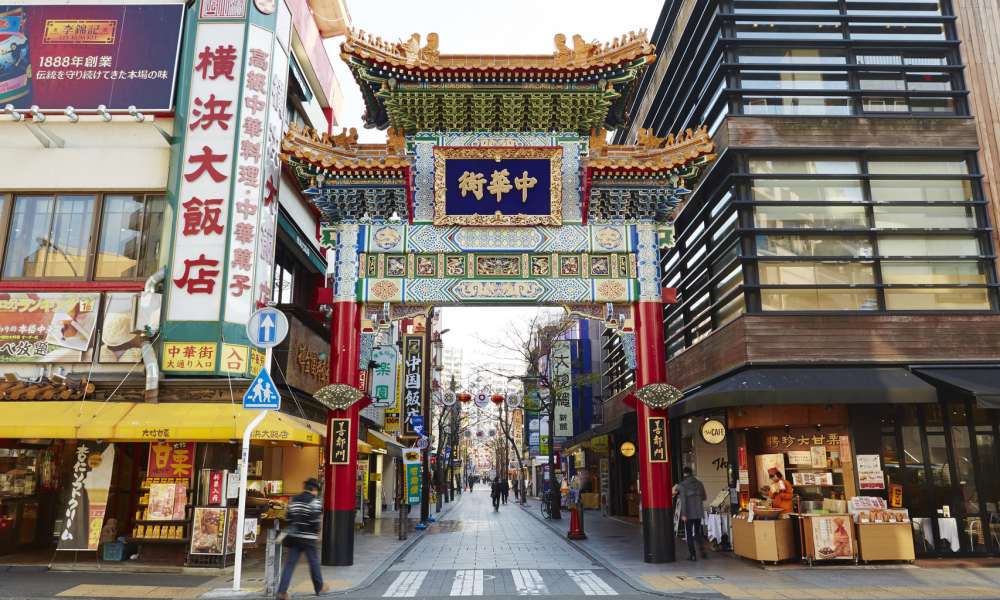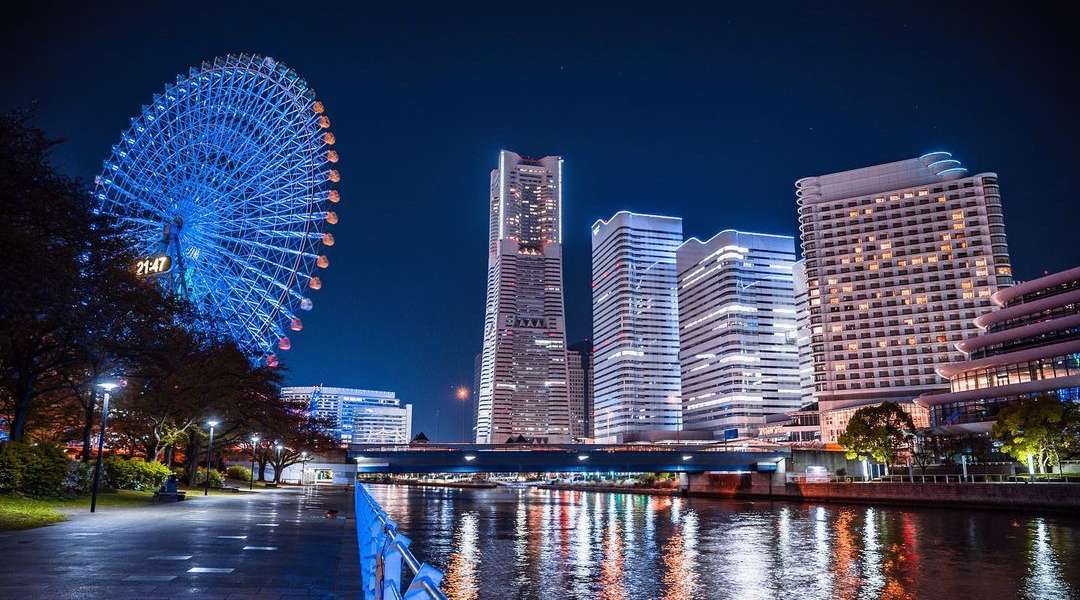 To the west of Japan's largest Chinatown stands the Zenrin-mon or "The Good Neighbour Gate" in Yokohama
To the west of Japan's largest Chinatown stands the Zenrin-mon or "The Good Neighbour Gate" in Yokohama
Just a stone’s throw away from the Japanese capital, Yokohama is in no way outshone by its metropolitan neighbour. From its humble historical roots, Julian Ryall takes a look at how Yokohama has blossomed and grown over the years into what is arguably the country’s most international city.
Catching Bigger Fish and Taking to International Waters
In 1849, Yokohama was a sleepy village of around 100 homes whose inhabitants made a living as fishermen supplying the city that was growing into Tokyo along the coast. Today, it is home to more than 3.6 million people and is arguably the most international and culturally diverse metropolis in Japan.
Initially, United States Navy Commodore Matthew Perry stood off the beach at Uraga, a few miles to the south, and requested that Japan open up to international trade. It was not until four years later that international access was transferred to Yokohama and the hamlet began its evolution.
The Old Meets the New at Minato Mirai
Yokohama has the skyscrapers and elevated highways that are such a feature of modern Japanese cities, but the centre of this metropolis has shifted, enabling the old heart of the city to be largely preserved.
While the district around Yokohama Station is given over entirely to shops and offices and the Minato Mirai district has been reclaimed and developed in the last decade, housing theme parks, arcades and the Cup Ramen Noodle Museum. Meanwhile, The old port has been preserved and protected.
That isn't to say that Yokohama escaped the last century-and-a-half entirely unscathed, the most serious damage being wrought on the city by Mother Nature.
Overcoming the Forces of Nature
On September 1, 1923, the Great Kanto Earthquake struck, the 7.9 magnitude quake triggering fires and a powerful tsunami. With so many buildings in the old waterfront district destroyed, it was decided that the debris be used to construct an open area on the seafront known as Yamashita Park.
A favourite today among young couples, the waves lap the stonework and buskers perform their tricks amid fountains and a rose garden. Moored off the front lies the Hikawa Maru, a luxury passenger liner launched in 1929 to sail between Japan and the west coast of the United States.
In its heyday, the liner carried royalty and stars of the silver screen - including Charlie Chaplin - as its passengers. Today, it is protected as a time-capsule and visitors can see its state rooms, smoking lounges and stand on the bridge - before stopping by the stern promenade deck for ice-cold beers and traditional Japanese summer snacks accompanied by a live jazz band.
Just inland from the park stands the recently renovated Marine Tower - at 106 metres listed as the tallest lighthouse in the world - and a block further inland the seething Chinatown district.
From China to Korea and Beyond

The largest Chinatown in Asia, with well over 200 restaurants and stores, the community grew quickly after Yokohama opened to foreigners thanks to shipping links with Shanghai and Hong Kong.
Catering far more to its local residents and less to the tourists, the Isezaki-cho Korean district is the legacy of the city's long association with another of its Asian neighbours.
But the oldest reminder of the roots of Yokohama's foreign community - when it was a gated foreign settlement in the Kannai district, where the baseball stadium stands today - has been preserved in the bluff district to the south of the city.
Overlooking the Nakamura River and the upmarket Motomachi shopping street, the hill rises steeply to the area where embassies, legations and the homes of wealthy businessmen were constructed, taking advantage of the cooler summer breezes and overlooking all that went on in the harbour.
A number of those buildings have survived to this day, including Berrick Hall, the Sacred Heart Catholic Cathedral and the home of an Italian diplomat, preserved as important national cultural artifacts.
Narrow lanes wend back down into the city, past the foreigners' cemetery and the 4,200 tombs of visitors and people who chose to make Yokohama their home, once again underlining the city's international credentials.
For more information on Yokohama, find out which Ghibli movie was set there with our comprehensive list here.
Or for a peak into the life of some locals, check out our interview with Yokohama insider CornyCo here and our interview with Yukiyo Smith in neighbouring Kamakura here.
Otherwise, to stay up to date with all the latest happenings in Japan follow us on Facebook or Twitter.


















































